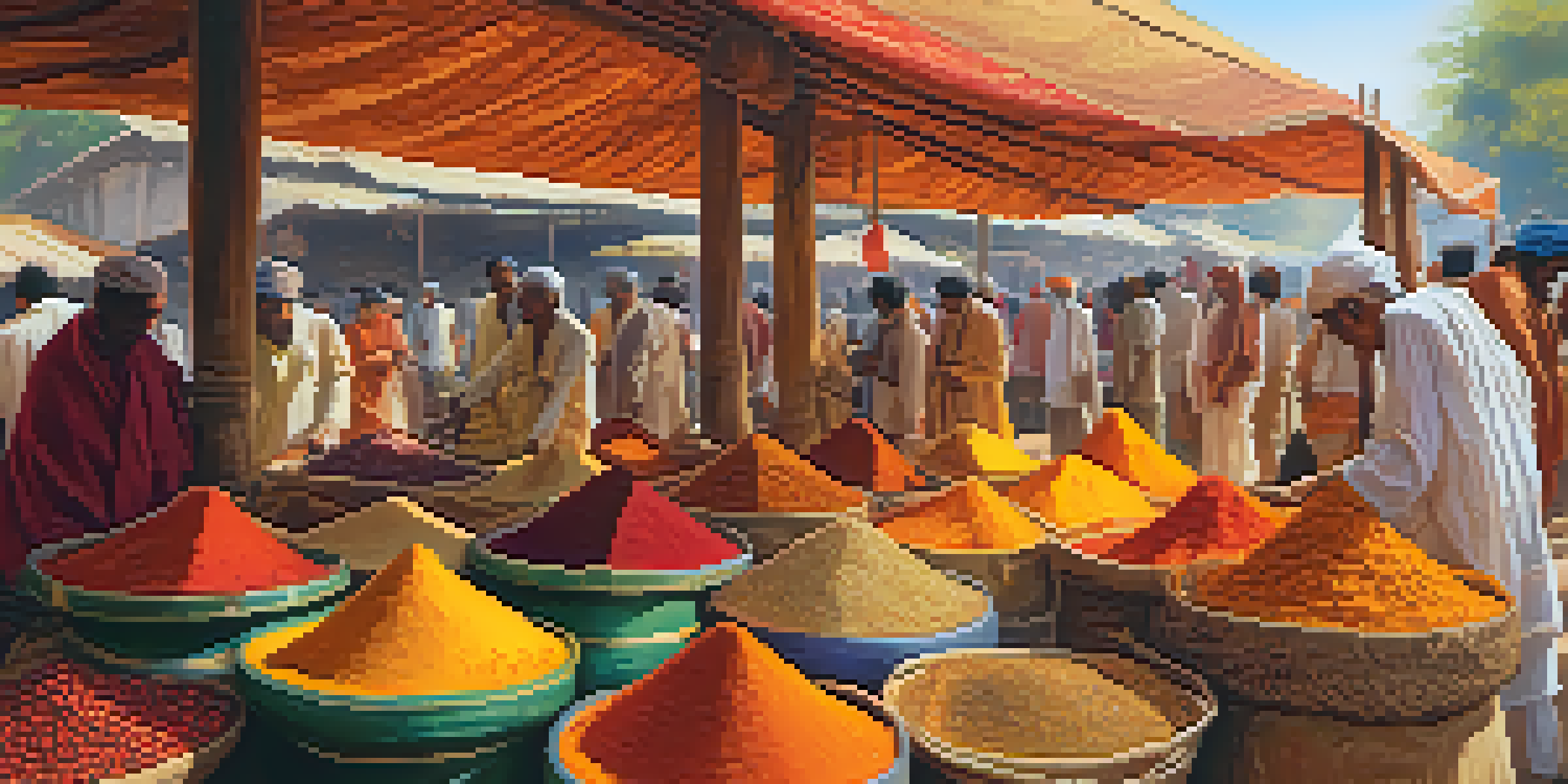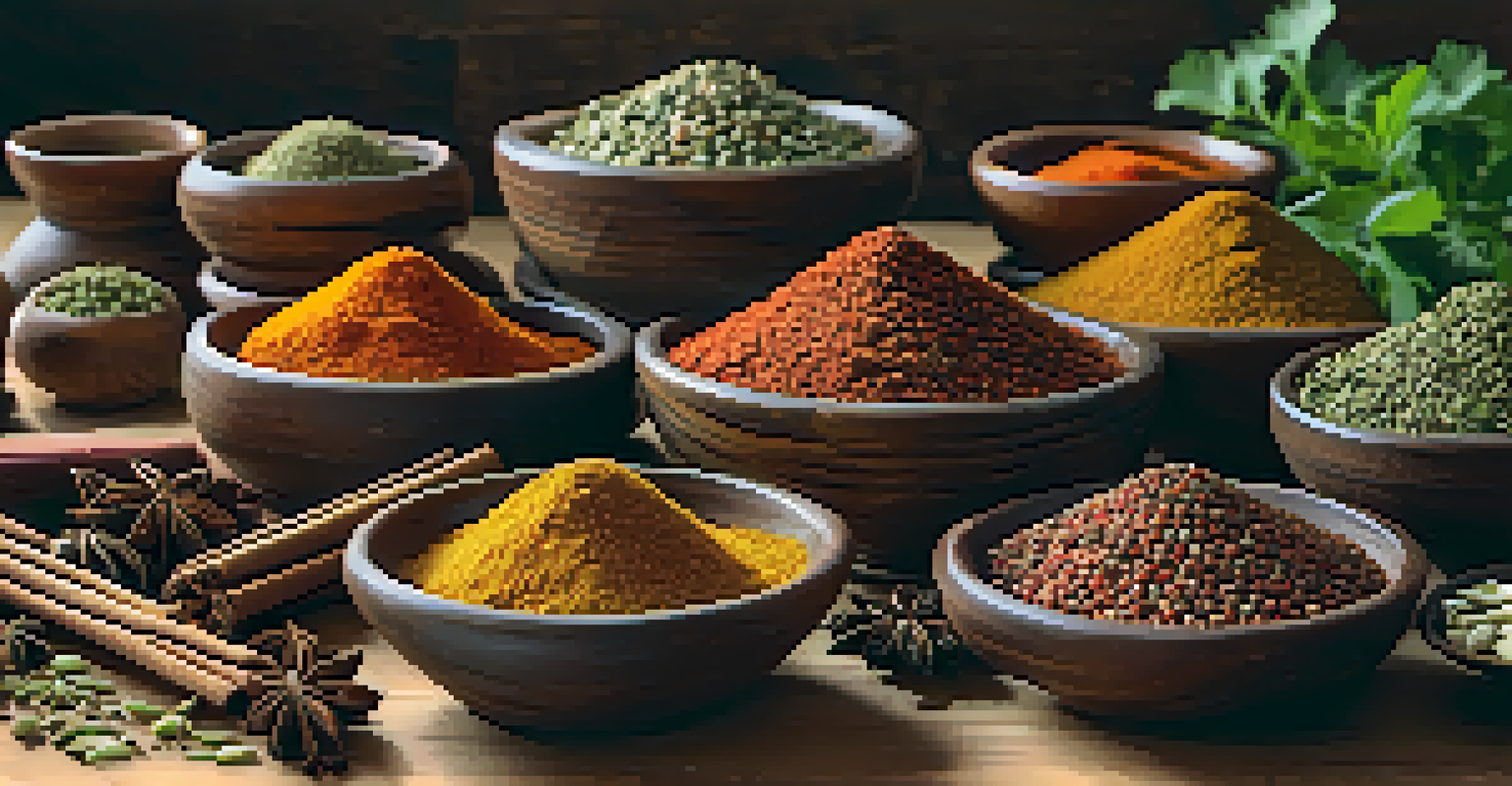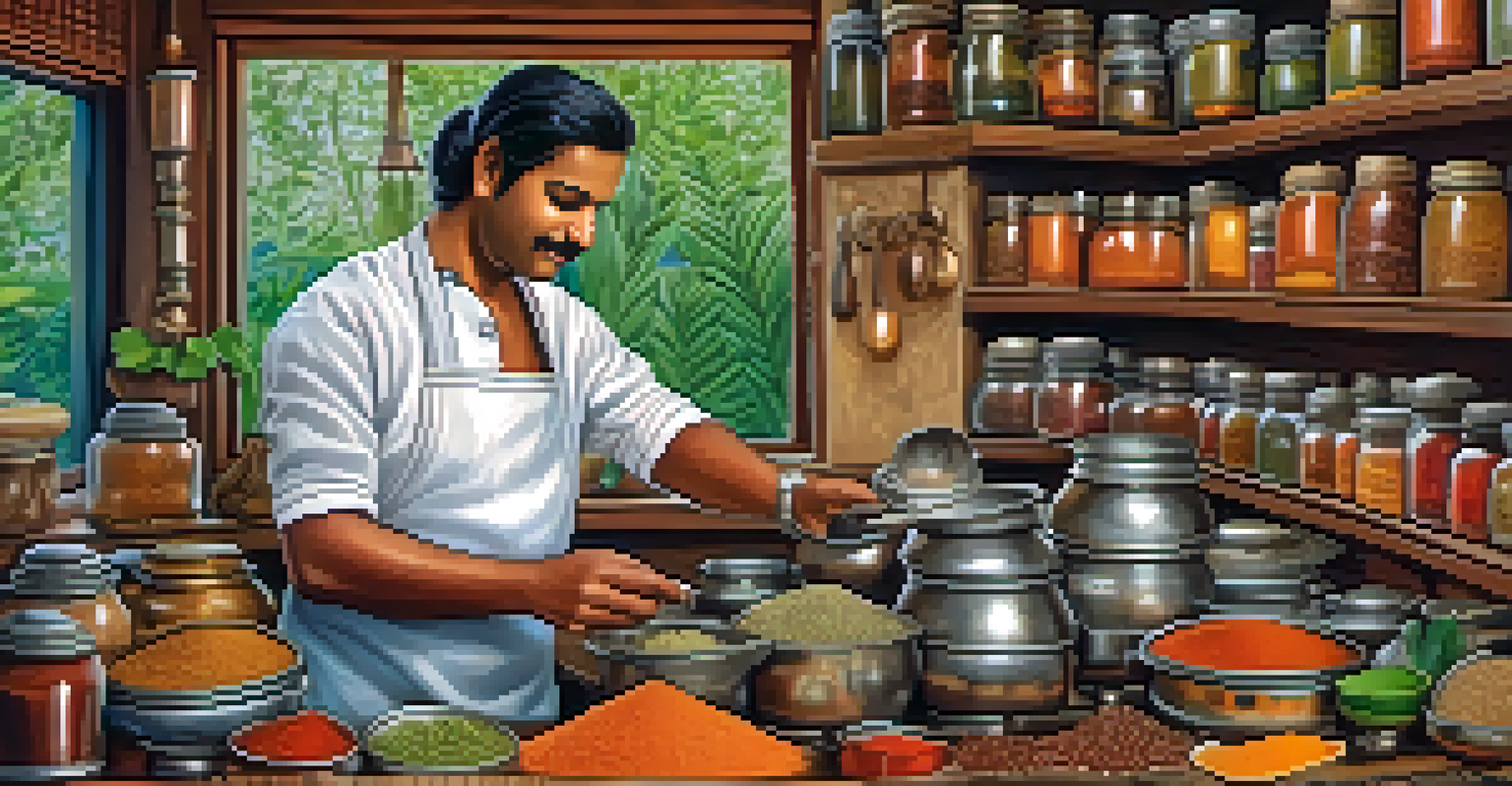Savoring Spices: Understanding Indian Ingredients on Tours

Introduction to the World of Indian Spices
Indian cuisine is a vibrant tapestry woven with a myriad of spices. Each spice tells a story, reflecting the diverse cultures and regions of India. When embarking on culinary tours, understanding these ingredients can significantly enhance your experience.
Spices are the soul of a dish. They can transform the simplest of foods into a symphony of flavors.
From the fiery heat of chili peppers to the warm embrace of cumin, spices play a crucial role in defining the flavors of Indian dishes. They not only add taste but also offer health benefits, making them integral to the Indian way of life.
As you explore the streets, markets, and kitchens of India, you'll discover that each spice has its own unique history and usage. This insight into the ingredients can transform your culinary journey into a rich learning experience.
The Essential Spices of Indian Cuisine
Not all spices are created equal, and Indian cuisine boasts a vast array of essential ones. Some of the most common spices you'll encounter include turmeric, coriander, and cardamom, each bringing its own distinct flavor to the table.

Turmeric, known for its vibrant yellow hue, is not just a spice but a powerful antioxidant. It's often used in curries and rice dishes, imparting a warm, earthy flavor that defines many Indian meals.
Discover the Role of Spices
Indian spices not only define the flavors of dishes but also offer health benefits and insights into the country's diverse cultures.
Coriander seeds, on the other hand, provide a citrusy undertone that complements a variety of dishes. Understanding these key spices and their roles can help you appreciate the depth of Indian cooking.
Exploring Regional Spice Variations
One of the most fascinating aspects of Indian cuisine is its regional variations in spice usage. Each state has its own unique blend of spices, influenced by local ingredients and traditions.
Cooking is like love. It should be entered into with abandon or not at all.
For example, the use of mustard seeds and poppy seeds is prominent in Bengali cuisine, while the vibrant use of coconut and curry leaves is a hallmark of South Indian dishes. This richness adds layers to the culinary experience.
During your tours, pay attention to these regional differences. They not only enhance your palate but also deepen your understanding of India's cultural diversity.
The Role of Herbs in Indian Cooking
While spices often steal the spotlight, herbs are equally important in Indian cuisine. Fresh herbs like cilantro, mint, and curry leaves add freshness and brightness to dishes.
Cilantro, for instance, is frequently used as a garnish, but it also lends a distinctive flavor to chutneys and curries. Mint, with its cooling properties, is perfect for balancing the heat in spicy dishes.
Explore Regional Spice Variations
Different regions of India showcase unique spice blends that reflect local traditions and ingredients, enriching your culinary experience.
Incorporating herbs into your culinary explorations allows for a fuller appreciation of the balance and harmony that defines Indian cooking.
The Art of Spice Blending
A key component of Indian cooking is the art of spice blending, known as 'masala.' Each household may have its own secret blend, passed down through generations.
Common masalas include garam masala, which combines warming spices like cinnamon, cloves, and black pepper. This blend can elevate a simple dish to a new level of flavor.
On your tours, take the opportunity to learn how to create these blends. It's a practical skill that can transform your home cooking and deepen your connection to Indian cuisine.
Sustainable and Ethical Sourcing of Ingredients
In recent years, there has been a growing movement towards sustainable and ethical sourcing of spices and herbs. This is particularly important in a country like India, where agriculture plays a crucial role in the economy.
Many tours emphasize visiting local farms and markets that practice sustainable farming methods. This not only supports the local economy but also ensures the quality and authenticity of the ingredients.
Embrace Sustainable Sourcing
Supporting sustainable farming practices while exploring Indian spices ensures quality ingredients and contributes to a more ethical food system.
By choosing to learn about and support these practices, you contribute to a more sustainable future while enjoying the best of what Indian cuisine has to offer.
Conclusion: Your Culinary Adventure Awaits
As you prepare for your culinary tour through India, remember that understanding spices and ingredients is key to savoring the experience. Each bite tells a story, and each spice adds a layer of complexity.
Engage with local chefs, visit spice markets, and don’t hesitate to ask questions. The knowledge you gain on this journey will not only enhance your palate but also enrich your appreciation for this diverse cuisine.

So, pack your bags, bring your curiosity, and get ready to embark on a flavorful adventure that will tantalize your taste buds and broaden your culinary horizons!